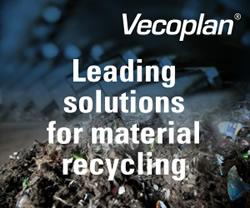Power-to-X (PtX) Market: Driving the Clean Energy Transition
The Power-to-X (PtX) market is growing due to global decarbonization efforts, renewable energy expansion, and electrolysis tech. Governments and industries are investing in green hydrogen and synthetic fuels to cut emissions and reduce reliance on fossil fuels.
The Power-to-X (PtX) market is projected to reach $769.3 million by 2033, growing at a CAGR of 9.3% from 2024 to 2033. PtX technologies convert surplus renewable energy into hydrogen, synthetic fuels, or chemicals, enabling energy storage, grid balancing, and decarbonization across hard-to-electrify sectors like industry, heating, and transportation.
At the heart of PtX is electrolysis, where water is split into hydrogen and oxygen. This green hydrogen can be used directly or combined with CO₂ to produce synthetic fuels such as e-methanol, e-kerosene, or ammonia.
Governments and industries worldwide are accelerating investments in PtX to strengthen energy security, reduce emissions, and build resilient supply chains. Regions like Europe, China, and the U.S. are leading green hydrogen development, while countries with vast renewable resources—such as Australia and the Middle East—aim to become hydrogen exporters.
🌍 Market Drivers & Opportunities
The PtX market is gaining momentum due to:
• Global decarbonization efforts and net-zero targets
• Growth in renewable energy capacity
• Government policies supporting hydrogen economies
• Industrial demand for long-term, flexible energy storage
The transportation sector is a key growth driver, with PtX enabling sustainable fuel solutions for heavy-duty vehicles, aviation, and shipping. Major automakers and aerospace firms are exploring hydrogen-powered and hybrid propulsion systems, backed by emerging refueling infrastructure.
However, the lack of mature infrastructure for hydrogen production, storage, and distribution remains a significant barrier. Transporting hydrogen and synthetic fuels requires major investment in pipelines, tanks, and liquefaction systems. Despite these challenges, policy support—like the EU Green Deal, US Inflation Reduction Act, and Japan's Hydrogen Strategy—is accelerating the deployment of PtX technologies through subsidies and public-private partnerships.
The market is segmented by type (Power-to-Gas, Power-to-Liquid, Power-to-Heat), end-use industry (transportation, agriculture, residential, manufacturing, industrial), and region (North America, Europe, Asia-Pacific, LAMEA). Key players include Air Liquide, Siemens AG, Linde PLC, ThyssenKrupp AG, and Orsted A/S.
As global climate goals tighten, PtX stands as a cornerstone of clean energy strategies, offering scalable, flexible, and sustainable solutions for a net-zero future.
Featured Product

